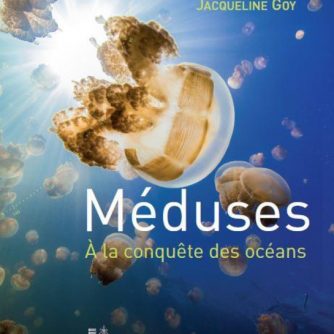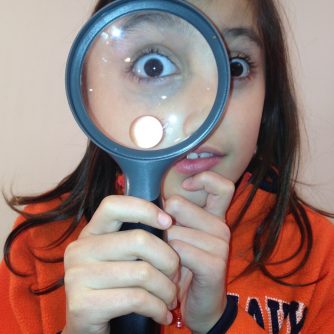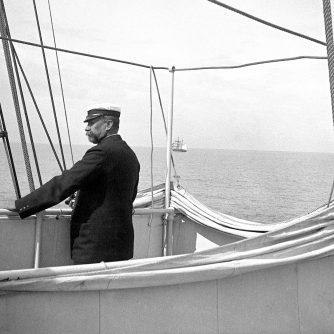The Monegasque Care Centre
marine species
- Home
- Intervenants-FDM
- Turtle Care Centre
A refuge for endangered marine species
Highly symbolic of the Oceanographic Institute’s missions, this centre, which will be inaugurated in 2019, is intended above all for marine turtles in difficulty. Built as an extension of the Museum, on the edge of the Saint-Martin gardens, it will to take in turtles found wounded or injured. but can also be used for projects to support Mediterranean biodiversity, such as future projects concerning seahorses or large mother-of-pearl.
Composed of a care clinic and a 160 m³ rehabilitation pond, its originality lies in the fact that a part located in the open air, is integrated into the visit of the Museum and allows visitors to observe the convalescing turtles.
The Museum’s teams have been caring for turtles found injured at sea for many years. The creation of the Care Centre provides a better capacity for intervention, in support of local services (maritime affairs, harbour master’s office, fire brigade, etc.) and in conjunction with the Mediterranean turtle care network, in partnership with the French Mediterranean Sea Turtle Network (RTMMF) and the Centre d’études et de sauvegarde des tortues marines de Méditerranée.
A clinic for turtles
Interview with our Aquarium Manager
What to do if you encounter a sea turtle?

A TOOL FOR ANIMATION
AND MEDIATION
The rehabilitation pool and the kitchen, where the keepers prepare the daily menu for each species, are visible to the public.
A 21.5 cm thick glass pane, specially manufactured in Japan, forms the transparent façade of the rehabilitation basin, which visitors can walk along to observe the residents.
The turtles will have benefited from all the attention of the Museum’s formidable teams of caretakers, in five care pools located in the heart of a 550 m² space.
Why did you create
this new centre?
Marine turtles are subject to most of the pressures that humans exert on the ocean, from the coasts to the high seas: urbanization, overfishing and bycatch, collisions, pollution and plastic accumulation.
These animals, which lived alongside the dinosaurs and witnessed the birth ofHomo sapiens, have been able to adapt to major changes in climate and marine and coastal environments over the past 150 million years.
However, a collapse of most of their populations has been noted over the last three decades, a decline largely due to human activities.
Their fate will depend on our ability to give them a place on the coast and to manage our activities to preserve the ocean.
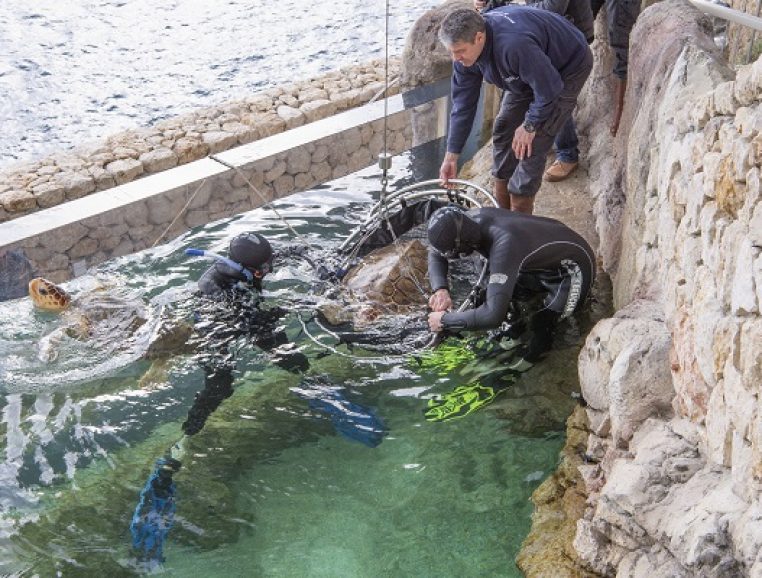
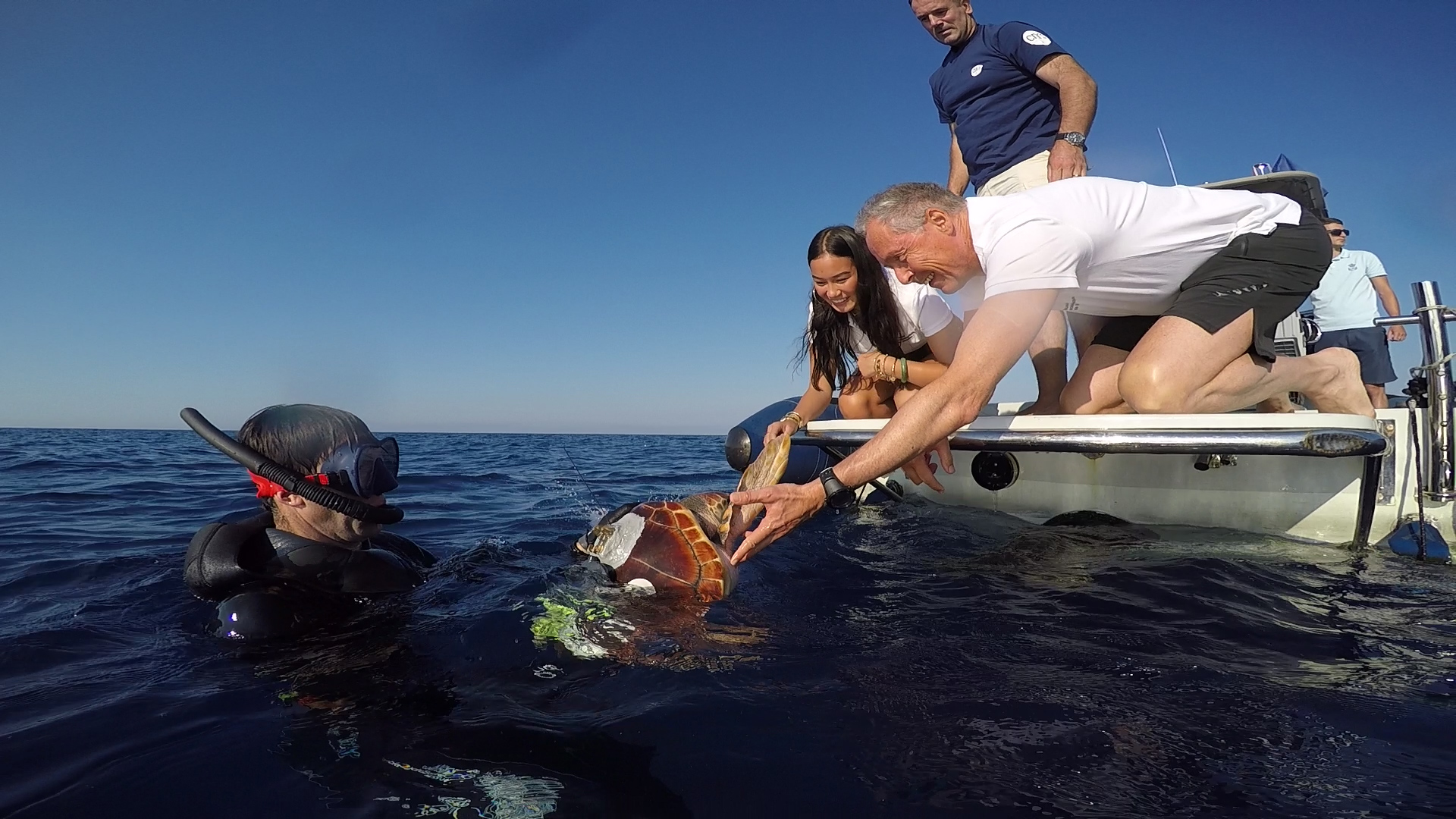
The return to the sea
Before returning to the open sea, the treated turtles go through a 160m3 rehabilitation basin, located in the open air, to ensure their ability to return to the sea (feeding, swimming…).
Some of them will be equipped with a “high-tech backpack” full of sensors. This scientific device will make it possible to collect essential data on their movements, behaviour and feeding areas.
The public will be able to follow the itinerary of the rehabilitated turtles online.
TWO TURTLES INVITED TO STAY
Samy is a loggerhead turtle born at Marineland in 2011 who was entrusted to the care center in as part of the Caretta which aims to raise awareness of the general public to the cause of marine turtles.
After spending 2 years (2015 and 2016) in an enclosed lagoon at Cap d’Antibes, his acclimatization in the wild could be assessed, but unfortunately, it was not suitable for reintroduction into the wild.
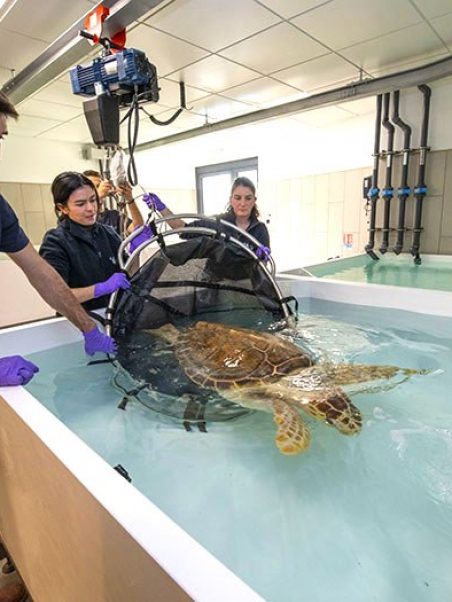
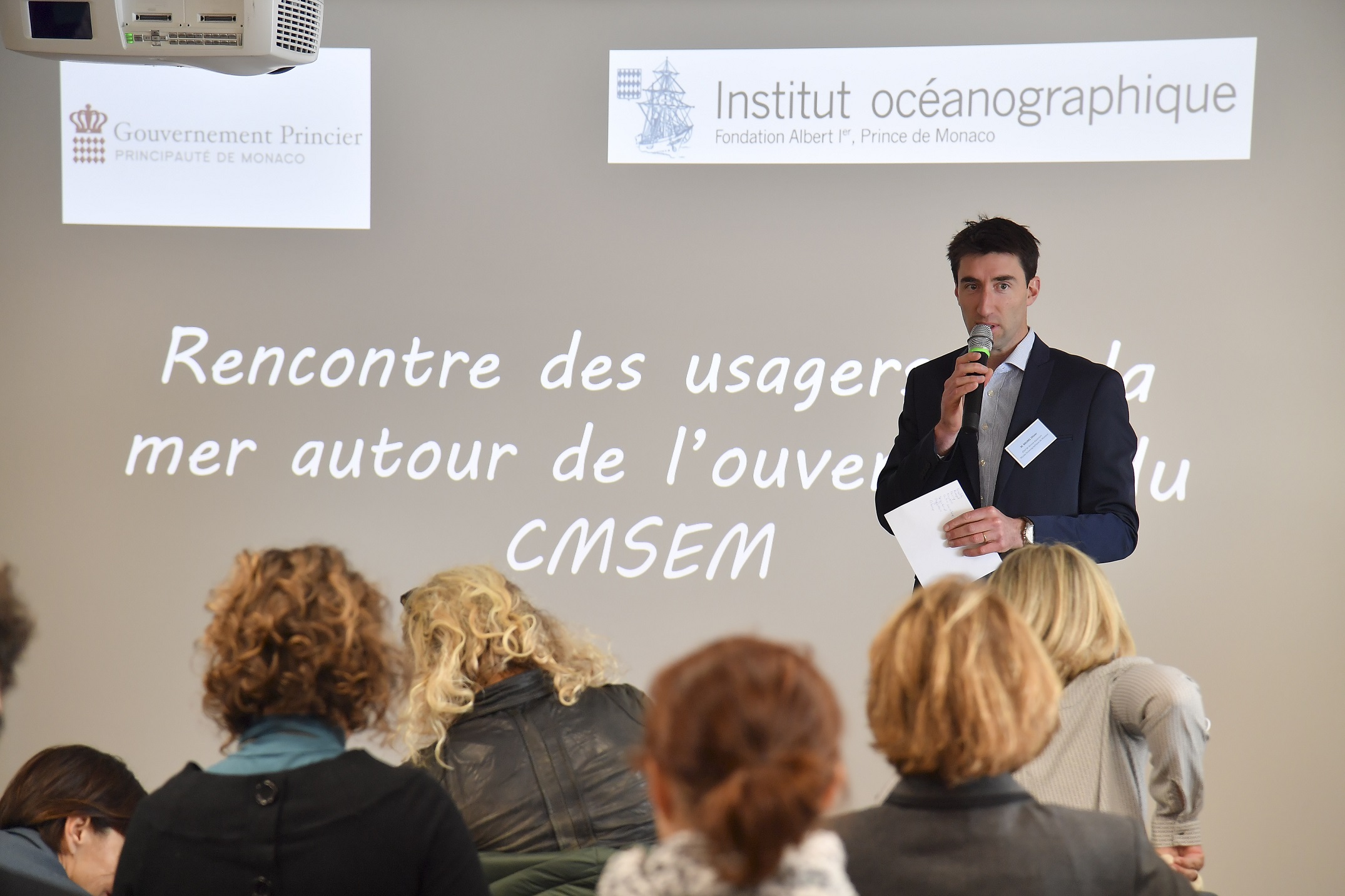
A day for the users of the sea
The creation of this new centre was an opportunity to bring together local stakeholders for a day of awareness-raising for users of the sea in and around Monaco.
It was also the occasion for the creation of the Guide to Good Practice in the Event of an Encounter with a Marine Turtle.
Did you know?
During the development of this area, the first preventive excavations in Monaco were carried out by the Museum of Prehistoric Anthropology.
The site, which included a watchtower and the remains of medieval ramparts, revealed an ancient gallery, as well as a wealth of archaeological material (flint tools, metal jewellery, shells and ancient ceramics).
Even more astonishing: fifty human bones, some of which belong to a man in his thirties
who lived on the Rock in the 14th century, at the time of the arrival of the Grimaldis!







